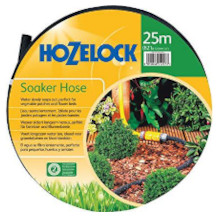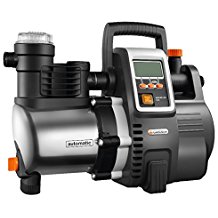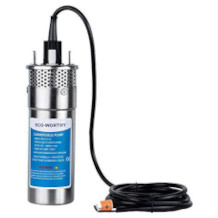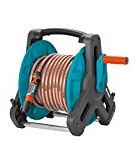Hose reel purchasing advice: how to choose the right product
- What You Need to Know
- Hose reels help to keep the garden hose neatly rolled up. Tripping hazards in the garden are now a thing of the past.
- The hoses are protected in the reel both from kinking when rolled up and from material fatigue caused by UV rays.
- Many hose reels use a mechanism to roll up the garden hose automatically and without the use of muscle power.
- They are mounted on a wall, for example, and can then be swivelled horizontally by a few degrees.
Store garden hoses neatly and safely
Spring begins, the first shoots sprout and you plant flowers or sow lawn seeds. Rising temperatures also mean that some trees, shrubs and plants need extra wet to grow. As the size of the garden increases, lugging countless watering can fills becomes a pain. The alternative is to water the greenery with a garden hose. Larger gardens require a long water hose to reach every corner of your oasis of peace.
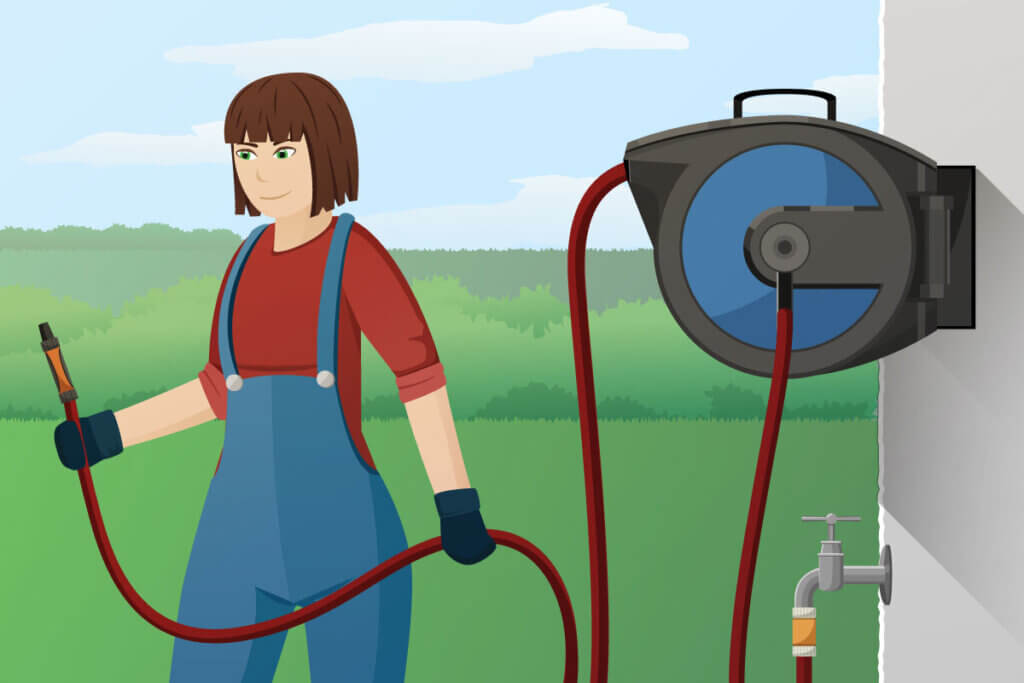
A garden hose carelessly meandering across the green or patio looks untidy. The larger the garden, the longer the hose needs to be – and the higher the risk of tripping it poses. Laying it around bends and the resulting kinks will sooner or later damage the hose. Especially in summer, the material lying on the garden soil is exposed to UV radiation from the sun. Porous spots are the result over time. Pulling the hose over the ground is strenuous and edges increase the risk of damage. Without a hose reel, it is necessary to gather the hose every time or to roll it up on a reel including a hose guide.
To prevent the garden hose from getting knotted, kinking, being led over sharp edges and being permanently exposed to sunlight, it is advisable to invest in a hose reel, also known as a wall hose box. Without such a garden helper, the garden hose either remains on the ground or has to be laboriously looped over the shoulder and then stored in the garage or on a wall bracket. By buying a hose reel, you ensure that the water hose is stored neatly and tidily. The hose boxes are designed for wall mounting and have a closed housing. With most models, the hose is already included in the delivery and cannot be replaced.
How does a hose reel work?
A hose reel should first be distinguished from a hose cart, where the garden hose is manoeuvred onto a spindle by means of a crank and the hands get dirty by guiding the hose. Hose boxes perform these tasks automatically: with all models, the garden hose is neatly distributed over the entire storage space. With most models, the hose is wound up by itself. The wall-mounted hose reels can be swivelled a few degrees horizontally and can be locked so that they stop in front of the wall to avoid damaging the housing and the wall. The hose is now neatly rolled up, always ready for use and protected from UV radiation.
For whom is it worth buying a hose reel?
Investing in a hose reel is especially worthwhile for those who regularly water large areas in the garden. By using a wall-mounted hose box, they not only save time spent unknotting the fabric hose and rolling it up after use, but they also avoid dangerous tripping hazards in the garden and always know the garden hose is neatly stored. As a result, it is always ready for use and has a high durability. Kinks that impair durability are virtually eliminated. The purchase is also worthwhile for small gardens: where there is little space for storage, a hose reel really comes into its own with space-saving, almost invisible storage.
What to look for when buying
Hose reels are available in different price categories. Inexpensive models range between 50 and 100 euros. You can expect a longer service life, more functions and thus greater ease of use with models priced from 100 euros upwards. High-quality models reach prices of over 200 euros.
Winding system
First of all, it should be noted that systems with a rewind system are priced higher than hose reels without such a rewind aid. Wall-mounted hose boxes without a rewind system are few and far between. In terms of convenience, they do not differ much from hose reels: with these models, too, you have to crank the hose onto the reel.
In the vast majority of boxes, the hose is pulled in by a spring. This is tensioned when the hose is pulled out – which is why pulling it out is somewhat more difficult – and pulls the hose back into the housing when the parking brake is released. With many boxes, this is done by gently pulling on the hose.
In the luxury version, a motor takes care of the work. This usually works via an integrated rechargeable battery, which in the case of Gardena is sufficient for 70 to 100 retractions. The disadvantage is that you have to store battery-powered hose boxes indoors, for example in the garage or garden shed, at low temperatures and frost so that the energy storage does not suffer any damage. With spring-driven versions, on the other hand, a place protected from the weather is sufficient. Spring-wound models are also the better choice for users who want a hose system that is always ready for use without having to recharge in the meantime.
Hold the hose during retraction
Hold the hose firmly during retraction or guide it with your hand. This will prevent the hose from rushing into the box at high speed and damaging the syringe at the front of the box.
Hose guide
A hose guide ensures that the hose is rolled up neatly and evenly into the box. A mechanism swivels evenly to the left and right so that the irrigation hose is not only rolled up one above the other, but continuously next to each other. Almost all models have this device.
Length of the garden hose
First of all, a distinction must be made between the supply hose to the box and the hose on the reel. The inlet hose is used to connect the hose reel to the water tap, for example on the terrace or in the garage. These often have a length of two metres. You should therefore plan the installation location of the wall box close to the water tapping point. Alternatively, you can extend the inlet hose by means of a coupling or use a longer hose than the one supplied for connection.
There are also differences in the usable length of the irrigation hose. For example, it can be 10, 20, 40 metres long or even more. The length should correspond to the size of the garden so that you can ideally water all corners of your garden. If necessary, the irrigation hose can be extended by means of a coupling, but this contradicts the purpose of automatic winding: it is not possible to wind it up beyond the original length.
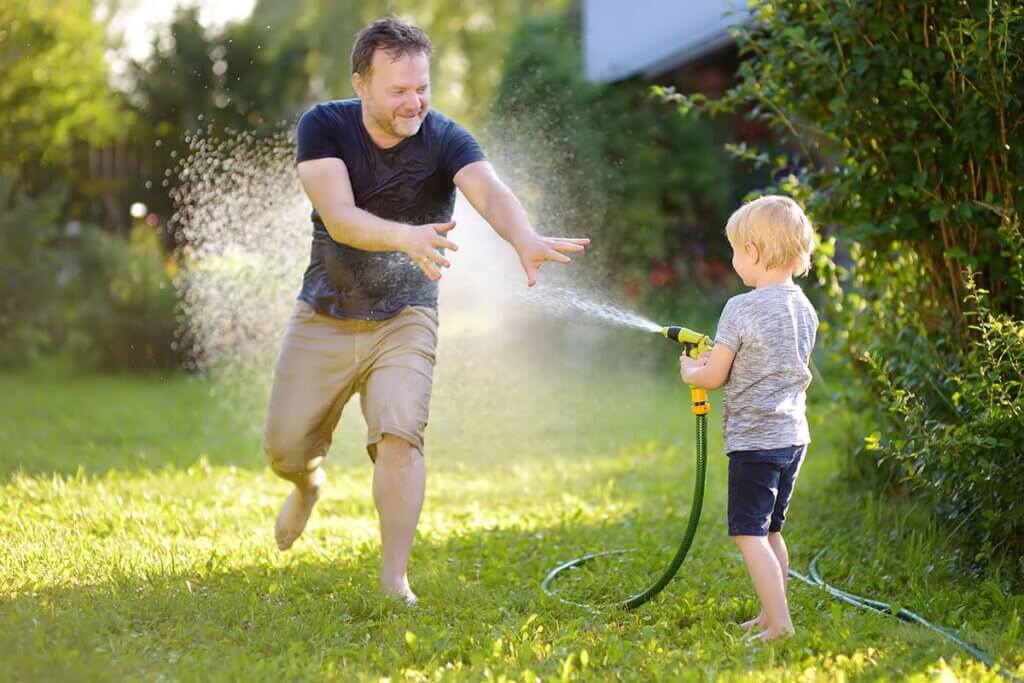
Swivel radius
The swivel radius of the hose reel determines how many degrees you can swivel the wall-mounted box. This is especially important if the water connection and the hose box are in the middle of the garden and the hose is to be pulled in at least two different directions. A swivelling hose reel prevents the hose from bending around corners and kinking.
Diameters and couplings
For historical reasons, hose diameters are given in inches. The most common diameter for garden hoses is 1/2 inch, which corresponds to twelve millimetres. Hoses with diameters of 3/4 and 5/8 inches are also available.
Most wall-mounted hose boxes are designed for hoses with a half-inch diameter or include these in the scope of delivery. Adapters are available for combining different hose diameters. As a rule, hoses with different diameters cannot be rolled up.
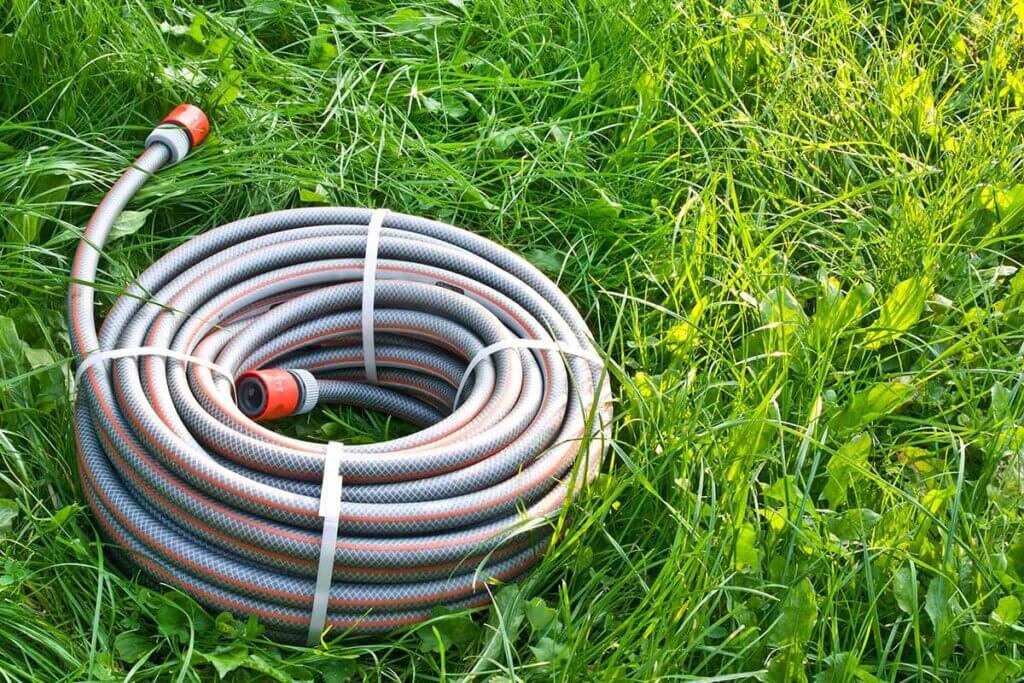
There are also special adapters for connecting to the tap. Make sure that these are ideally already included in the scope of delivery so that you can start gardening straight away.
Sprayer, shower, nozzle and lawn sprinkler
It is not a good idea to simply let the water out at the end of the garden hose into the flower bed. To water the flowers, plants and trees in a more targeted way, sprinkler heads are very good.
Some hose reels come with them. In addition to a powerful full-head spray, some models also allow a fanning spray. Switching is often infinitely variable by turning. Furthermore, shower heads can be part of the scope of delivery or purchased later. They can be used to gently spray sensitive plants, but can also be hung in a branch fork and used as a shower spray.
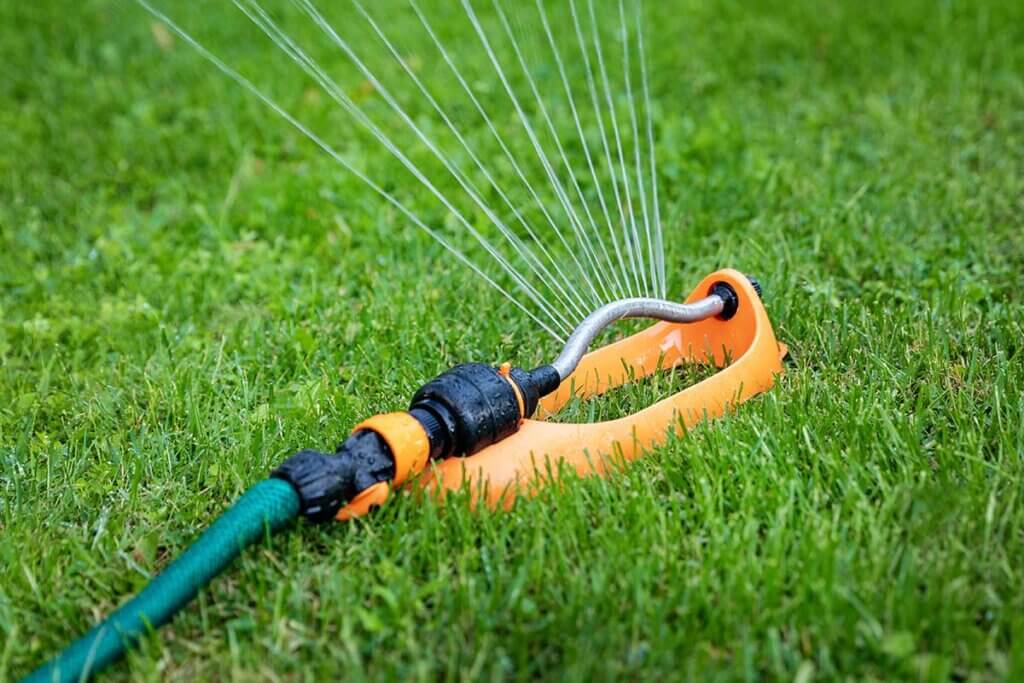
Using a garden sprinkler or lawn sprinkler is also no problem: If the garden is to be watered over a large area, unroll the hose and connect the device to the end of the hose using a coupling. After use, disconnect the sprinkler from the garden hose and conveniently reinsert the hose.
Durability
An important purchase criterion is the material quality and workmanship. In the case of very inexpensive no-name products, it can happen that more plastic is used than metal and that plastic parts quickly become brittle due to UV rays or break quickly due to mechanical wear. Good workmanship is also essential for the hose itself so that it remains usable for many summer seasons. If it shows signs of damage, the lifetime of some hose reels is over. Therefore, it is practical if you can replace the hose in the box with a new one if it is damaged.
Dimensions and weight
The dimensions of the hose box are not too much of a concern as it is wall mounted and does not need to be carried. In most garden applications it is not necessary to pay attention to a few centimetres more or less edge length. The same applies to the weight of the item, which plays a subordinate role at best with a permanently installed hose box. At most, the dead weight of the hose, which increases with its length, is noticeable. In addition, a hose filled with water is heavier and therefore cannot be pulled across the floor as easily as an empty hose.
Alternatives to the hose reel
An alternative to the hose reel is a purist hose holder. These are usually cheaper to buy, but do not offer as much comfort as the pull-out reels.
Hose holder
Hose holders are simple aids for storing the garden hose. They are designed for permanent wall mounting, for example on the house wall or in the garage. The irrigation hose is hung in loops on them. These simple solutions do not have an unwinding mechanism: instead, you have to lift the hose down and pull it along the ground behind you to the place of use.
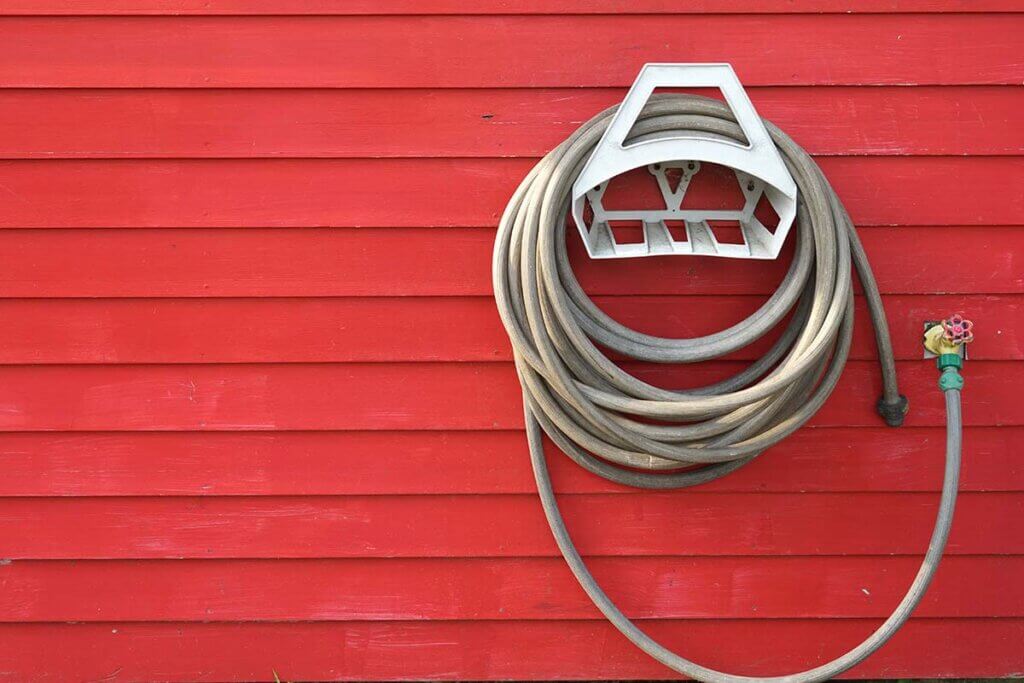
This not only requires more strength, the storage option often looks untidy and the risk of kinks and knots is increased.
Hose trolley
The alternative is to use a hose cart. Here you unroll the garden hose for use. After gardening, you use the crank to roll the hose back onto the reel. However, it is necessary to guide the hose by hand so that it rolls evenly over the entire width of the reel. Often you need another person for this. You do not have all these problems with a hose reel.
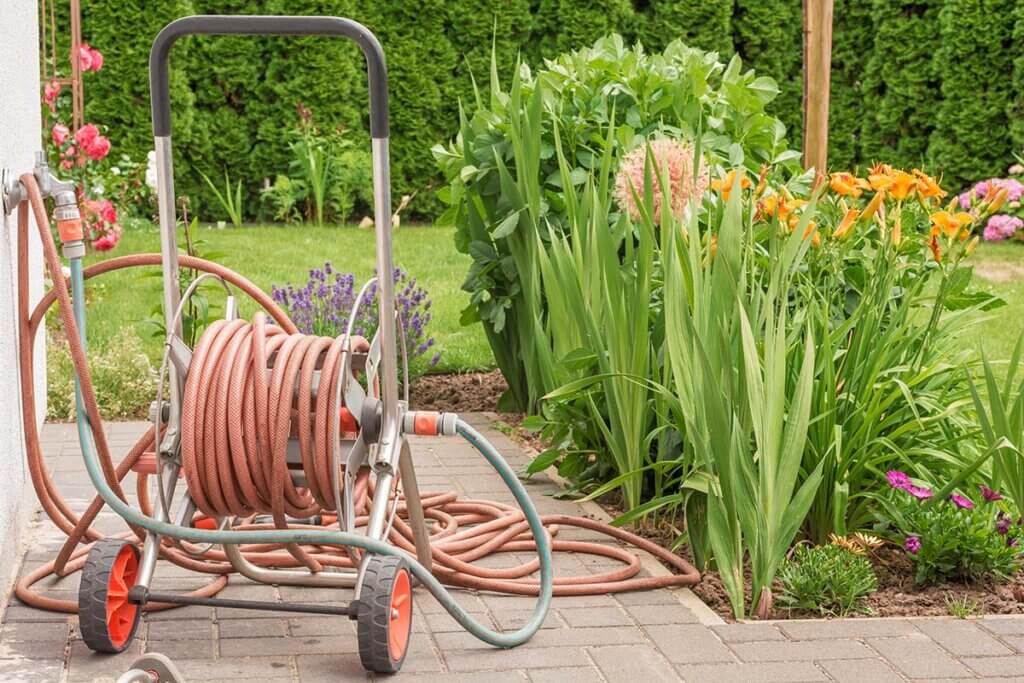

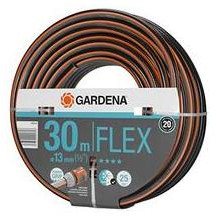
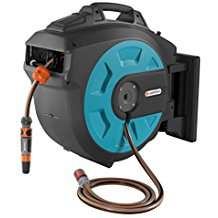
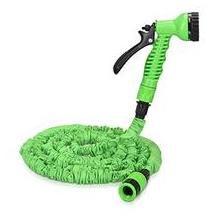

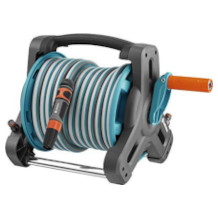
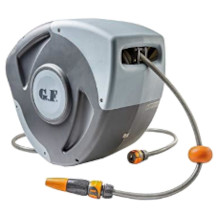
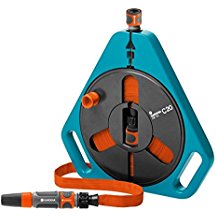
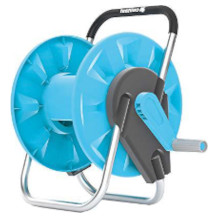
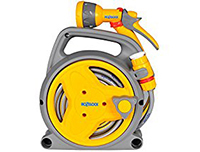
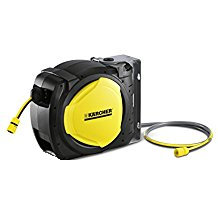

 13,391 reviews
13,391 reviews

